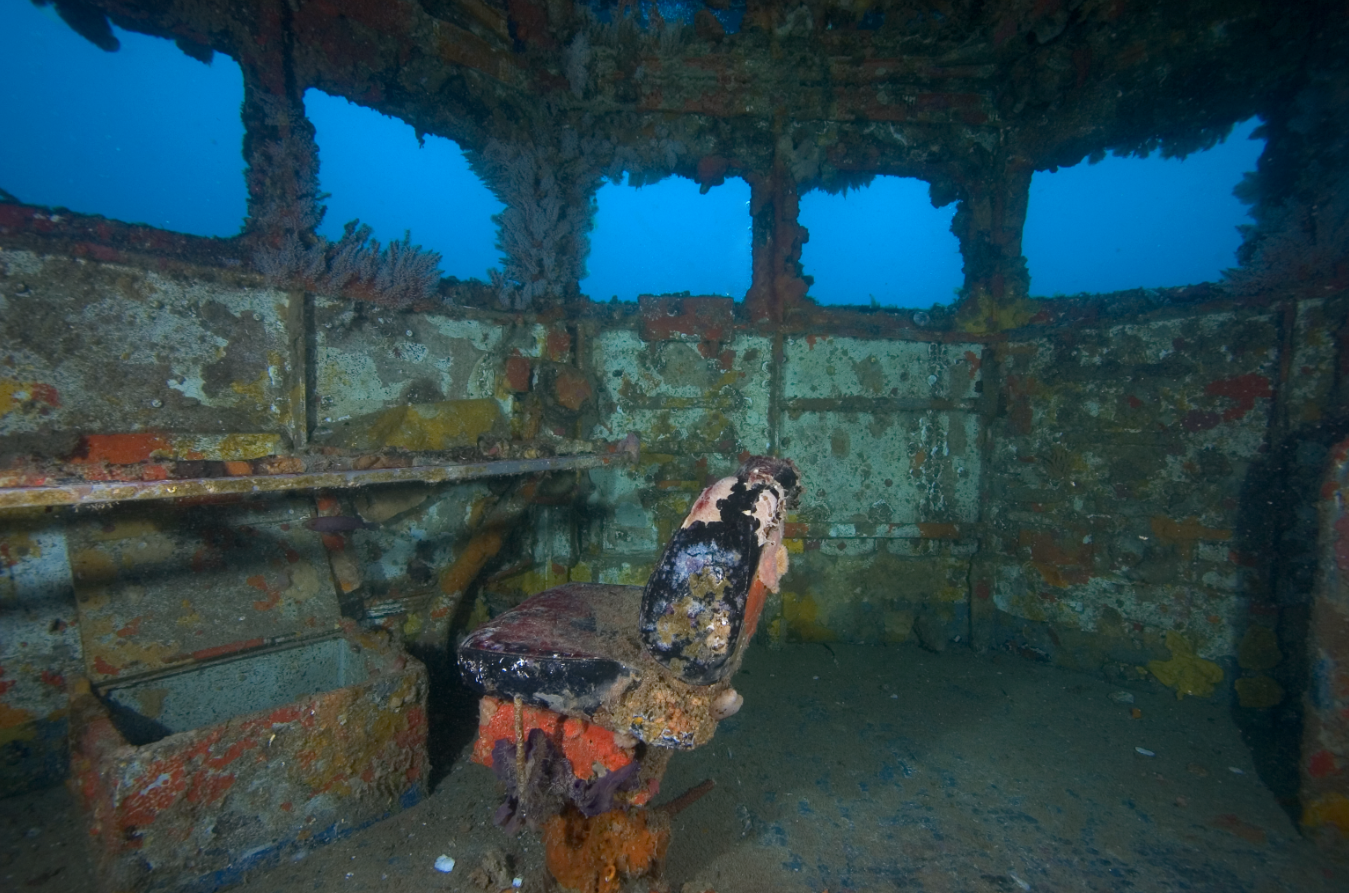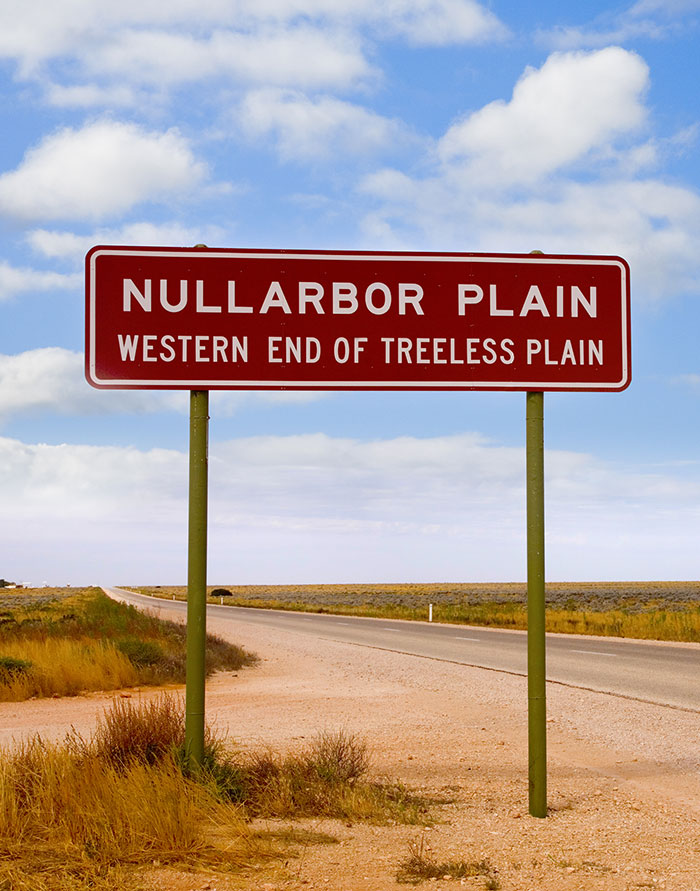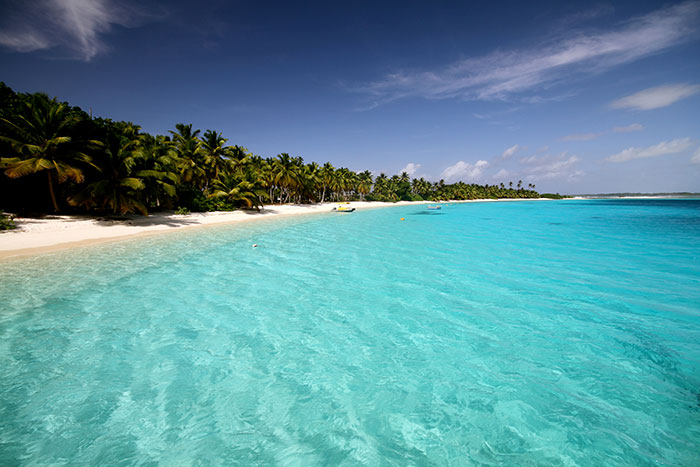There’s spectacular marine diversity for divers in WA, from wrecks in the southwest, to the world-renowned Ninglaoo Reef in the north.
There's spectacular marine diversity for divers in WA, from wrecks in the southwest, to the world-renowned Ninglaoo Reef in the north, with fascinating marine creatures to be found in every nook and cranny. The archipelagos and islands, with their coral atolls and numerous marine creatures (think manta rays, turtles and dolphins), provide some of the best dives the world. For the adventurous, there's also night dives to be had, plus the challenging but treacherous and potentially life-threatening underwater cave systems on the Nullarbor Plain.
WHERE TO GO
Islands & Archipelagos
Islands and archipelagos have a special place in Western Australia – their weather and water quality combined with their remoteness have resulted in astounding diversity above and especially below the water. Only 18km off the Freo coast, Rottnest is 11km long and 4.5km at its widest, with 63 bays and beaches, squeaky white sands and deep blue waters. Expect world-class diving in the warm tropical sea, which is home to brilliantly coloured corals, countless species of fish, rock lobster, and dozens of wrecks. Less than one hour's drive south of Perth are the Shoalwater Islands, made up of Bird Island, Seal Island and the picture-perfect Penguin Island. A colourful coral reef, shipwrecks beneath the waves, and the opportunity to snorkel and dive with dolphins provide drawcards for adventurous water enthusiasts. If you're after a dive much further south, the Recherche Archipelago (near Esperance) is made up of more than 100 islands. Diving charters are popular, and there are many dive sites to choose from, including a few wreck sites. Granite intrusions provide large caves, boulders and swimthroughs in crystal-clear temperate water, and colourful soft corals and sponges line the caves and boulders. The hard coral is usually in the form of plate coral, and teems with tiny colourful fish. The area is also home to the famous southern fighting crayfish and abalone, sea lions, New Zealand fur seals and dolphins. Of the islands and archipelagos in the northwest, a visit to the Abrolhos Islands is a must – you'll find sanctuaries full of fish and marine life. Common passers-by are sea lions, dolphins and stingrays, which often seem unafraid of humans. The dives feature large dhufish, baldchin gropers, and myriad colourful coral-dwelling fish. If you plan on visiting the Abrolhos, which are about 60km west of Geraldton, jump on board a dive vessel so you have the opportunity to dive different places over several days. Another attractive option (but also difficult to reach) is Dirk Hartog Island. The many reefs (the closest is only 200m from the beach) are scattered around the island, and divers might spot bottlenose dolphins, dugongs, turtles, humpback whales and sharks. Snorkellers at Surf Point and Sandy Point can see more than 300 fish species. The best scuba spots are at South Passage near Steep Point, and Turtle Bay at the north end of the island: dive sanctuary zones, bommies, swimthroughs, canyons, and caves, and discover sites never explored before. The Mackerel Islands are becoming increasingly popular with divers, too. Located only 22km off the Onslow coast, the surrounding reef system provides a valuable link for marine life between the Ningaloo Reef to the south, and the Dampier Archipelago, Montebello Islands and Rowley Shoals to the north. These ten islands are surrounded by a colourful marine wonderland where you can walk in off the beach and descend onto rarely dived reefs (it's been described as some of the best diving in Australia). Other hotspots include the Montebello and Muiron islands.
Reefs
Ningaloo Reef is one of Australia's best-kept secrets and is WA's answer to the Great Barrier Reef. If you love diving with marine animals, the reef will be your dream come true; depending on the season you're likely to see whale sharks, manta rays, turtles and reef sharks. You can book a tour in Coral Bay or Exmouth, which both have great options for snorkelling, too. Coral Bay, however, has reefs that are easier to access – in Exmouth you'll need a car to drive to Cape Range National Park. In the national park there are several bays where you can access the reef, but don't just flock to where the rest of the tourists are headed – you'll be rewarded if you suss out the private spots. One of the best dives (and one of the top 10 pier sites in the world) is the Navy Pier in Exmouth, which is a marine sanctuary bursting with biodiversity. While it's close to Bundegi Reef, it's not a reef itself, although it is just as packed with underwater life. Wobbegong sharks, white tip reef sharks, enormous cod and gropers, moray eels and barracuda all inhabit the pier. The list of species you'll see is endless: expect to glimpse more creatures on one dive here than you would normally see on several elsewhere. Night dives on the pier are equally remarkable and are offered to advanced divers when tides are favourable. The pier is still a working US navy base, and security is very tight so don't forget to bring your passport or driver's licence for the ID check at the gate. Note: to dive the Navy Pier you need to have dived within the last six months. Much further north are the Rowley Shoals, a collection of three coral reefs. The tepid water in the lagoons, amazing visibility and marvellous corals make the Rowley Shoals one of the world's best dive sites. The shoals rise almost vertically out of the water and are sitting on the remains of three volcanoes, 180 nautical miles west of Broome. Under the water you'll be awestruck by the masses of colourful coral – there are 28 species of staghorn coral alone. The tides and currents can be strong but make it ideal if you like drift diving, with and without tanks. Above water, the superb sunsets and desert islands put Pirates of the Caribbean to shame. The easiest way to get to the Rowley Shoals is to fly to Broome, where you can meet up with a boat charter out to the Shoals; make sure you book first. To the south of Perth, there are several wreck dives, but not much in the way of reefs. Around Yallingup is your best bet, with some great swimthroughs. Reefs closer to the city include Point Peron (Safety Bay) and Bells Beach (Rockingham).
Wrecks
The many reefs bordering the coastline are incredibly hard to navigate, so it's no wonder that WA is home to an abundance of shipwrecks – many abound with marine life. There are also a number of vessels that have been expertly scuttled, and although some are relatively new they are quickly transforming as the sea creatures move in, making it exciting for divers to visit annually. The HMAS Swan in Dunsborough is one of the most diver-friendly wrecks in the state. Before the naval destroyer was scuttled in 1997, all kinds of diver access holes were cut, so there are entry and exit points in all areas of the ship. If you're planning on diving the wreck you'll be heading as deep as 32m below sea level, however the top of the vessel sits at 10m. All kinds of marine animals have made it their home, including king george whiting and brim (best spotted around the hull). The highlights of the wreck can be found in the depths; the inquisitive salmon fish practically pose for photos, and the coral formations are steadily growing, giving you a different experience after a prolonged absence. If you have your own boat you can pick up a permit from the Dunsborough visitor centre so you can dive the wreck. You'll reach the wreck after a 15-minute boat ride from Meelup Beach. Alternatively there are a number of dive operators who run tours, the closest being Cape Dive in Dunsborough. The Esperance coast is considered among the best diving locations in the state. It's home to the famous Sanko Harvest shipwreck – the second-largest dive wreck in the world and a vital habitat for marine life such as blue groper and red snapper. The Lapwing wreck – covered with soft coral and sponge growth – is another popular site. Albany's King George Sound is filled with granite boulders that sit like giant marbles on the ocean floor, and it's also the resting place for the HMAS Perth. Sunk in 2001, it has a high level of growth and marine life. Novice divers can explore the upright wreck, which begins at 5m, but if you have adequate diving experience, dive down as far as 36m (remember, you'll need a permit to dive it). If you're looking for several wrecks to dive in one hit, Rottnest is the place to go. There are dozens of wrecks around the islands – each has its own plaque describing the wreck and its history, and there are onshore markers indicating locations. The swell can be a bit temperamental but there are a number of easy-to-reach sites (okay for snorkellers), including the hopper barge Shark at Henrietta Rocks, the Uribes at Thomson Bay, and the Kiryo Maru I near Cathedral Rocks (50m offshore and a little more challenging to reach). Closer to Perth, Rockingham has six submerged wreck areas.
 Busselton Jetty
Busselton Jetty
Busselton Jetty is 2km long and originally built in 1865 to service whaling ships. Now, it's one of the best dive sites in WA. With a maximum depth of only 8m, the site is ideal for beginner and experienced divers. Under the water, sunlight beams dance among the ancient pylons, and if you keep your eyes peeled you'll spot wonderful hidden creatures including starfish, octopus and crabs. The jetty can be dived either through one of the local outfits such as The Dive Shed, or by catching the train along the jetty and entering the water off the dive platform near the end. If the kids are in tow, visit the jetty's underwater observatory so you can share your aquatic observations on the way home.
 Cave Diving
Cave Diving
Cave diving is seriously risky but there's no denying it can be breathtaking. Many underwater caves boast crystal-clear water and unique geological formations you won't see elsewhere. Caves also offer diving that is free of swell, drift and waves, meaning that visibility can measure hundreds of metres.
Cave diving in WA
WA is blessed with a number of underwater caves, including the jewel of Australian cave diving, Cocklebiddy Cave on the Nullarbor Plain. Recently the cave was named as one of the top 10 dive locations in the world, and with good reason; divers describe it as so clear you won't even realise you're underwater... it's the closest experience to space travel you'll get. The cave stretches 6.5km and is the longest underwater passage in the country. Only experienced open-water divers should consider cave diving, but that's not say that you can't aim to cave dive in the future. Head to cavediving.net.au to check out upcoming courses in WA and various associations in Australia.
FOR BEGINNERS
There are plenty of dive shops and centres that teach open-water courses, and will include gear, a few dives and manuals. The initial course cost is usually around
$500, and once you have your open-water diving ticket you can build up your credentials with courses that include night dives, deep-water diving and underwater photography. It's always best to book your diving course through a PADI instructor, because they have the highest qualifications.
Scuba Exam App
For your scuba exams you'll need to revert to high-school-type study methods (groan), but the Scuba Exam App is a useful tool to help you get prepared. The app includes diving theory, terms and expressions, and two preparatory quizzes. For under $5, downloading it is a no-brainer.
MARINE LIFE
Whale sharks
Swimming with whale sharks is awe-inspiring. The whale shark is the world's largest fish and can grow up to 12m long. You can swim with the sharks from March to July at Ningaloo Reef, which has the world's largest whale shark congregation. The swim only requires snorkelling ability, making it a great family experience.
Dugong
These shy, gentle creatures can be found in the waters around Shark Bay. Their average size is almost 3m in length, and a full-grown dugong can weigh up to 400kg. Dugongs are fascinating to dive with because they usually ignore divers, meaning you can watch them from close range.
Sea Dragon
If it's sea dragons you're after, head to Bremer Bay which has both the weedy and leafy varieties. Hanging like seaweed, the relatives of seahorses are masters of disguise; if you spot one, be sure to capture the exciting memory with a camera. The sea dragons at Bremer Bay can reached after a short swim 100m from the beach.
 The Cocos Keeling Islands
The Cocos Keeling Islands
This Australian Territory is also known as The Sand Bar, and consists of a ring of 27 sandy, coconut-palmed islands of which only two are permanently inhabited. They are 2950km northwest of Perth, and there are no resorts and few tourists. It is the place to go for peace and quiet, and to relax on a stunning tropical beach, swim, and dive in crystal-clear waters with coral reefs and beautiful sunsets. Scout Park on West Island and the tiny, idyllic Pulu Maraya Island are good locations for snorkelling. There are more than 1550 species of sea creatures for divers and snorkellers to discover, including manta rays, dolphins and turtles. Novice snorkellers have to try The Rip on the south end of Direction Island, where the current running between two islands carries swimmers over shallow coral. Booties are recommended to wade out over some sharp reef. Tours plus hire equipment are available. Divers can choose from more than 20 good sites around the islands containing hundreds of different species of corals. Kayaks, stand-up paddleboards and motorised canoes can be hired – some operators will drop you off at your chosen destination. There is also a glass-bottom boat operator that takes passengers to coral reefs in the inner lagoon. Explore North Keeling Island, 35km north of West Island, popular with bird enthusiasts and divers – be aware, though, that visits are rare due to the limited access and distance. Direction Island has a beautiful white beach facing the inner lagoon, and numerous ketches and yachts moor here. Camping is the only available accommodation, and is also possible on South Island, and at Scout Park on West Island. Campers need to be completely self-sufficient because there is no electricity or drinking water, and sometimes no toilets either. Photography of Direction Island by Cocos Keeling Islands Visitor Centre.
TOOLS
Dive Log
If you're a keen diver it's always handy to be able to record statistics and info about your dives. The Dive Log app is one of the most expensive on the market ($14.99) but it's also one of the most comprehensive. WA's reef system is extensive, so the GPS component is great to separate one dive from another. If you're exploring lots of dive sites over several days (think the Abrolhos, Montebellos and Rowley Shoals), rather than trying to recall the finer details of each site to mates, you can plug the info into the app and your friends can track your dive as you upload it. The best function is that you can sync your logs
on your computer as well. The only downside is that the app is so complex you can get a little lost in the menus.
PADI App
If you're headed to an unfamiliar destination, or have left something behind when packing, this app is useful to suss out where the closest PADI dive shop is in WA. You can use it from home or on the road, and it includes the latest scuba news, which is worthwhile for tips on buying dive computers, marine photography comps and new release gear (just remember the app is American-based).